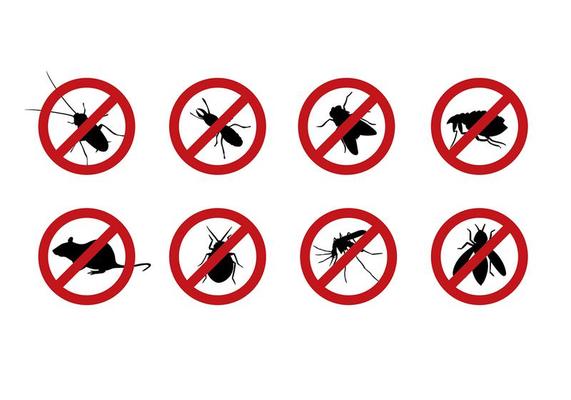Bed Bug Therapy Break Down: Comparing Chemical Vs. Non-Chemical Solutions
In the realm of pest control, specifically when dealing with the persistent issue of bed bugs, the choice between chemical and non-chemical treatment services can be an essential one. Both methods supply distinct advantages and disadvantages, affecting factors such as effectiveness, safety and security factors to consider, and total cost. By analyzing the nuanced details of each technique, a clearer understanding of which path to pursue in dealing with a bed pest infestation can be achieved.
Performance of Chemical Treatments
Chemical treatments for bed pest infestations have been extensively identified for their rapid and potent efficiency in eliminating these pests. When thinking about the effectiveness of chemical treatments, it is critical to recognize that they can supply a quick and thorough remedy to a bed pest trouble.
Furthermore, chemical treatments have the benefit of using recurring results, suggesting that they can continue to get rid of bed bugs even after the initial application. This recurring action is particularly beneficial in combating any kind of potential re-infestations. In addition, the quick action of chemical therapies can bring relief to individuals encountering serious bed pest problems, permitting them to restore control of their home swiftly.
Security Problems With Chemical Solutions
When utilizing chemical solutions for bed pest treatment is making sure the safety and security of occupants and the setting,One essential element that calls for careful factor to consider. While chemical therapies can be efficient in eradicating bed pests, they might posture dangers otherwise dealt with properly. Among the key safety and security worries with chemical options is the possible injury they can cause to human health. Exposure to particular chemicals utilized in bed insect therapies can result in respiratory system concerns, skin irritation, or other negative reactions, particularly in individuals with pre-existing problems or level of sensitivities. Furthermore, incorrect application or dose of chemical pesticides can result in harmful deposits lingering in the treated area, posturing long-lasting health and wellness risks to passengers.
Additionally, the ecological influence of chemical solutions is another substantial consideration. Some chemicals used in bed insect therapies may be unsafe to advantageous insects, wildlife, and communities if they seep into the soil or water systems. It is important to make use of chemical therapies carefully, following security standards, and considering much less poisonous alternatives to mitigate these dangers and guarantee the efficient and secure administration of bed bug invasions.
Benefits of Non-Chemical Strategies
Taking into consideration the potential safety and security problems and environmental impact linked with chemical solutions for bed bug treatment, exploring non-chemical methods provides an appealing choice with a number of unique benefits. Non-chemical treatments are environmentally friendly, as they do not add to air or water air click reference pollution, making them a lasting choice for insect control.
Furthermore, non-chemical solutions can be effective in targeting bed bugs, consisting of hard-to-reach areas where chemical treatments might not permeate. Methods such as warmth treatment, vacuuming, heavy steam cleansing, and mattress encasements offer complete removal without making use of damaging chemicals. Furthermore, non-chemical strategies can be much less turbulent, needing very little preparation and permitting for quicker reentry into treated areas. In general, opting for non-chemical bed pest treatment approaches not only focuses on safety and security and ecological defense but additionally makes certain extensive and reliable insect control.
Limitations of Non-Chemical Treatments

Furthermore, non-chemical therapies usually call for numerous applications to achieve successful eradication. This can be lengthy and might not constantly assure complete elimination of all bed insects and their eggs, specifically in surprise or hard-to-reach areas.
Furthermore, the success of non-chemical therapies heavily counts on correct execution and thoroughness, which can be challenging for individuals without expert know-how. Poor application of non-chemical approaches may lead to insufficient elimination, causing persistent infestations and the demand for additional treatments.
As a result, while non-chemical treatments have their benefits, it is necessary to acknowledge these constraints and consider them when determining one of the most efficient method for taking care of bed pest invasions.
Price Comparison: Chemical Vs. Non-Chemical Options
Offered the constraints linked with non-chemical treatments, a vital element to evaluate in the context of bed pest administration is the cost contrast between chemical and non-chemical choices. In comparison, non-chemical treatments like heat treatment or steam can be more costly, with prices ranging from $1,000 to $6,000 for an entire home. While the first cost of chemical treatments may appear lower, several therapies may be needed to totally eradicate the invasion, possibly increasing the overall expense.
Conclusion

Taking into consideration the click to find out more potential security concerns and ecological influence linked with chemical options for bed bug therapy, checking out non-chemical approaches presents an encouraging alternative with several unique advantages.Provided the limitations associated with non-chemical treatments, a necessary facet to assess in the context of bed bug monitoring is the cost comparison in between chemical next page and non-chemical options. In contrast, non-chemical therapies like warm therapy or steam can be more expensive, with prices varying from $1,000 to $6,000 for an entire home. While the initial cost of chemical treatments might seem reduced, several treatments might be called for to completely get rid of the invasion, possibly raising the total expense.In final thought, when comparing chemical and non-chemical bed pest therapy choices, it is vital to take into consideration efficiency, security, advantages, constraints, and expense.